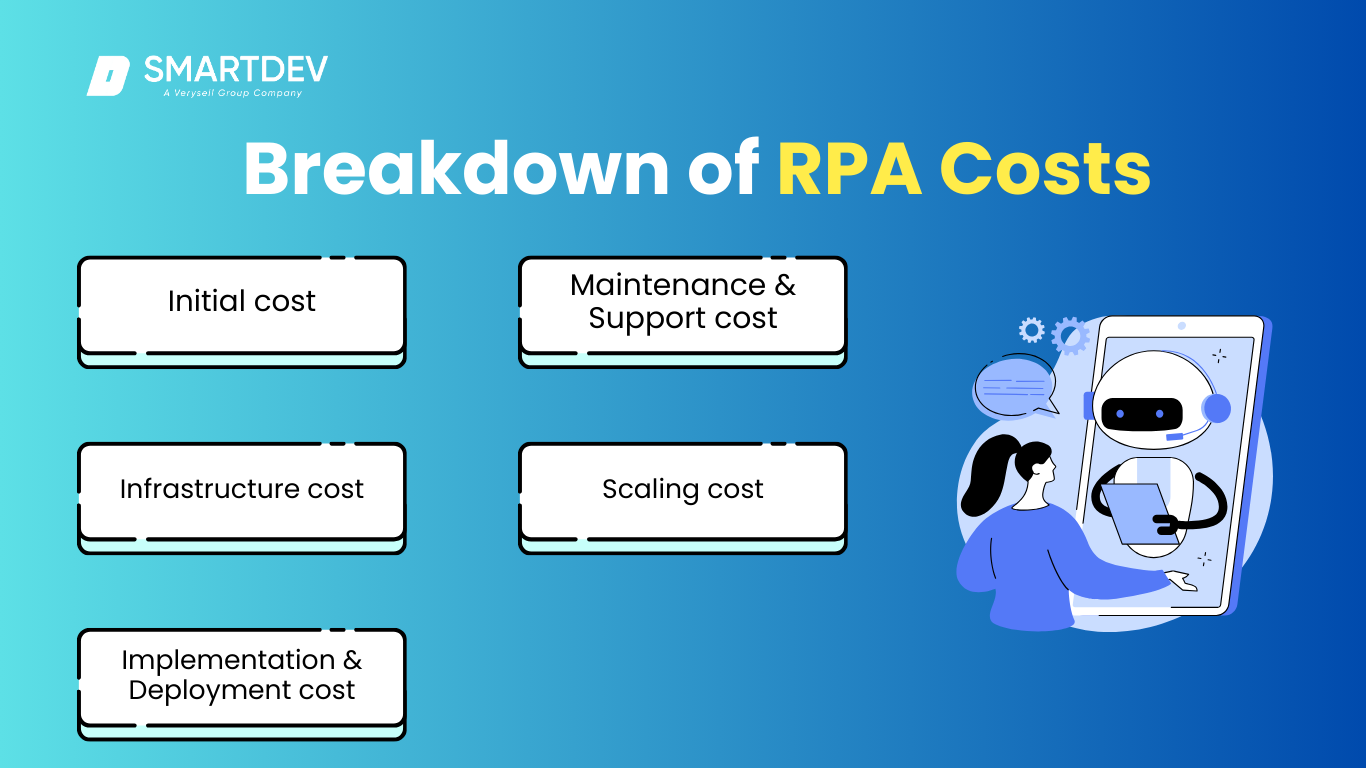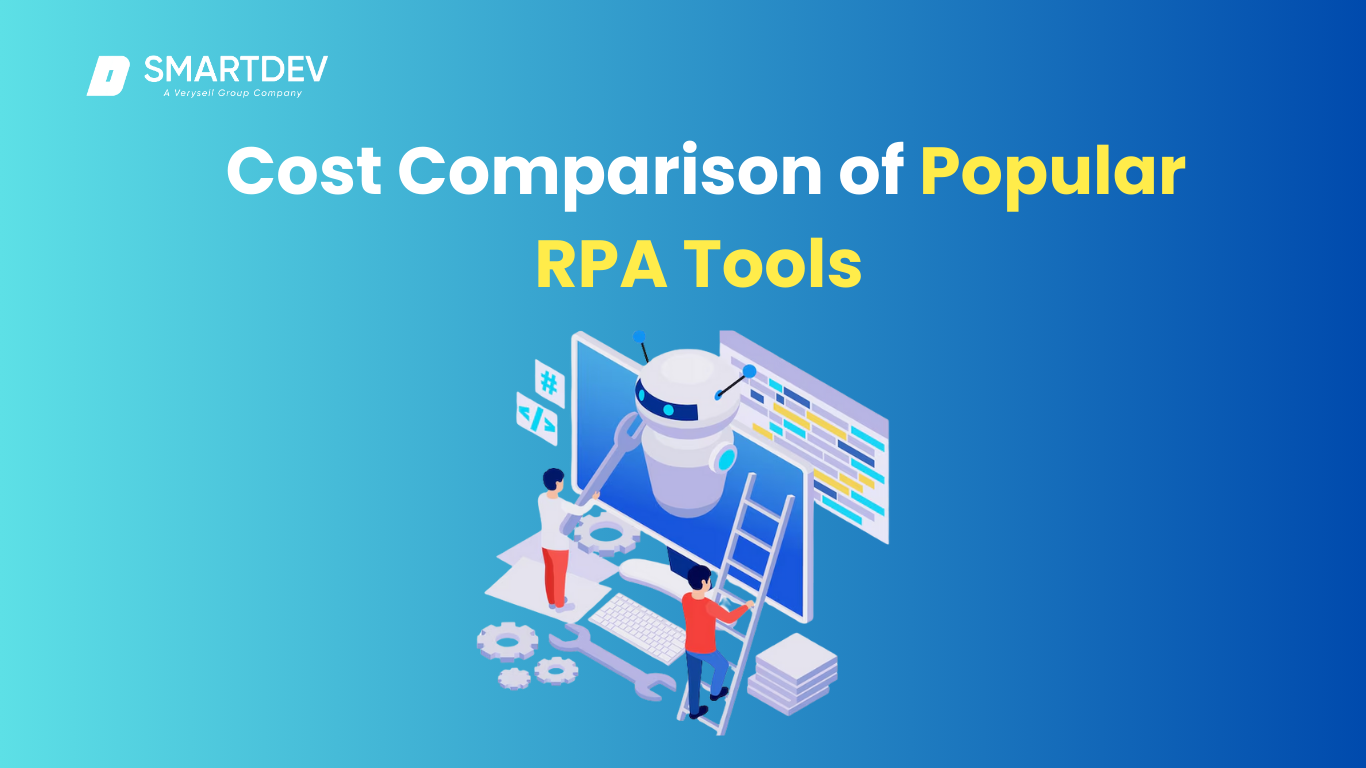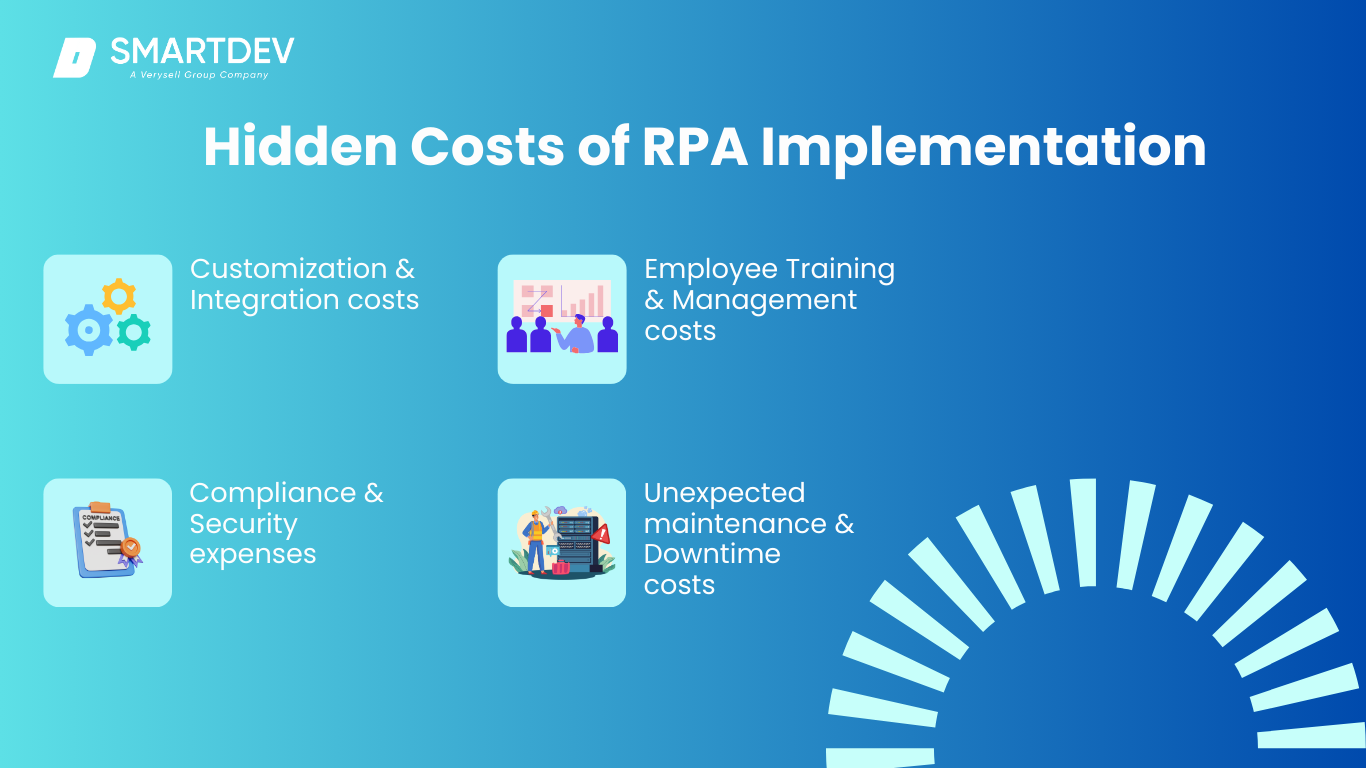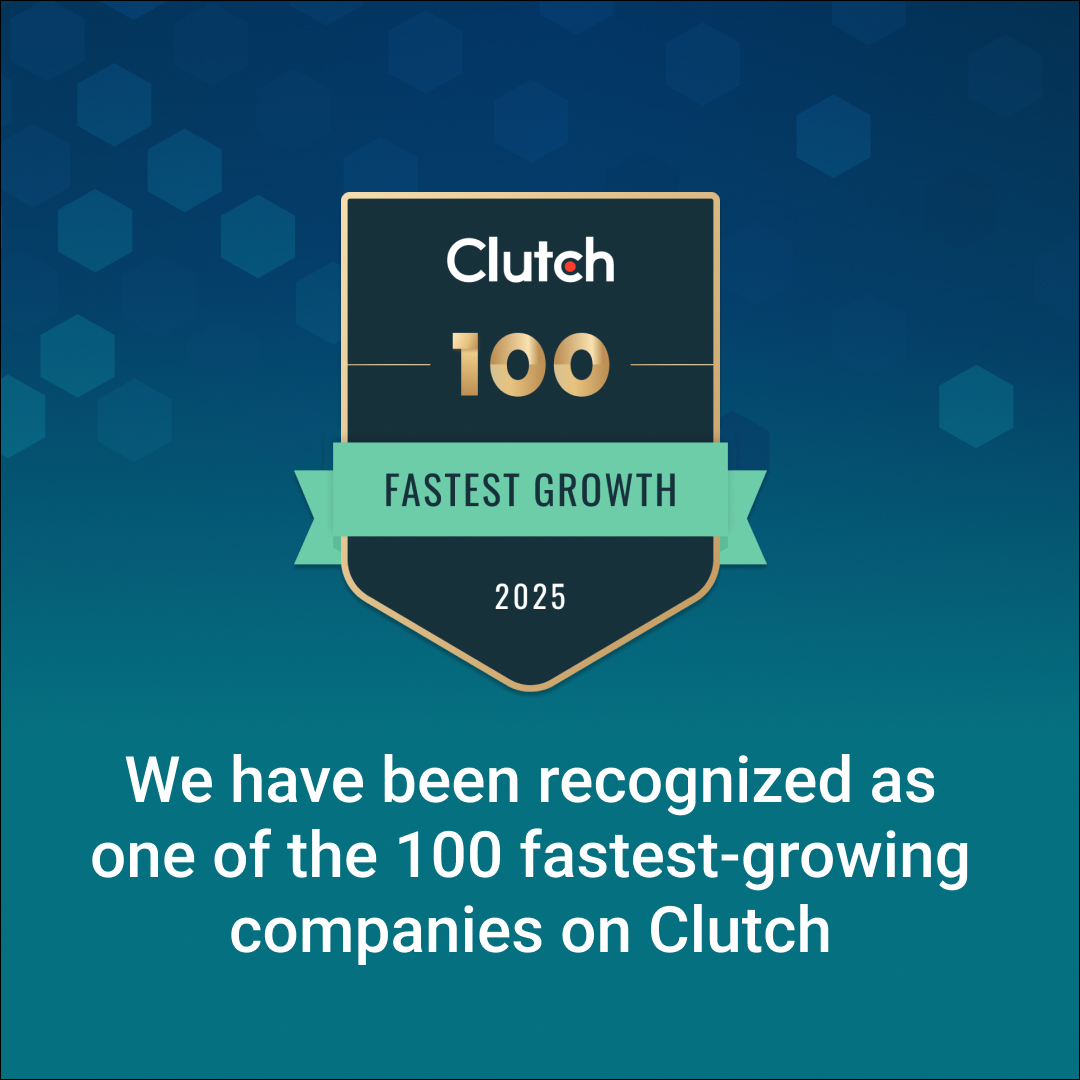Introduction
 Robotic Process Automation (RPA) is a technology that automates repetitive, rule-based tasks by mimicking human actions in digital systems. Using software robots, RPA interacts with applications and processes data with minimal coding, offering integration even with legacy systems when APIs are unavailable. It is commonly applied to data entry, reconciliation, system integration, automated reporting, and customer outreach. The goal is to free up human workers for more valuable tasks like problem-solving and customer care.
Robotic Process Automation (RPA) is a technology that automates repetitive, rule-based tasks by mimicking human actions in digital systems. Using software robots, RPA interacts with applications and processes data with minimal coding, offering integration even with legacy systems when APIs are unavailable. It is commonly applied to data entry, reconciliation, system integration, automated reporting, and customer outreach. The goal is to free up human workers for more valuable tasks like problem-solving and customer care.
RPA comes in three models: Attended RPA, where bots assist humans in complex workflows; Unattended RPA, where bots operate independently; and Hybrid RPA, a combination of both. Modern RPA is increasingly incorporating AI capabilities like machine learning and natural language processing to handle more complex tasks. This evolution broadens automation’s scope and could influence pricing and ROI assessments.
Understanding the costs of RPA is critical for businesses to ensure successful implementation and achieve a positive return on investment (ROI). A clear cost-benefit analysis helps in identifying appropriate automation candidates and in negotiating with vendors. Failure to account for costs can lead to financial shortfalls, while proper cost management maximizes ROI.
Despite misconceptions about RPA being costly or only for large businesses, many vendors now offer affordable subscription-based models, and cloud-hosted solutions eliminate heavy infrastructure investments. Additionally, RPA offers efficiency, accuracy, and productivity gains beyond cost reduction. Companies should view RPA as a long-term investment that can yield rapid ROI within 12 months when implemented correctly.
2. Breakdown of RPA Costs
The overall cost of implementing and maintaining an RPA solution is composed of several distinct components. Understanding each of these cost categories is essential for accurate budgeting and financial planning.
 Initial Costs: Software, Setup, and Licensing
Initial Costs: Software, Setup, and Licensing
The initial investment in RPA typically encompasses software licensing, setup expenses, and the initial infrastructure setup. Software licensing costs can vary considerably, ranging from a few thousand to hundreds of thousands of dollars annually. This variation depends on several factors, including the specific vendor chosen, the number of software robots or users required, the features and functionalities included in the license, and the selected deployment model (cloud-based or on-premise). Some vendors offer perpetual licenses, which involve a one-time upfront fee for long-term usage, while others utilize subscription-based models that require recurring payments, typically on a monthly or annual basis.
Setup costs involve the initial configuration of the RPA software to align with the unique requirements of the business. These costs can range from a few thousand dollars for automating simple, straightforward tasks to over $100,000 for more intricate workflows that involve multiple systems. A significant portion of the set-up costs may also include consulting fees. These fees cover the expenses associated with engaging experts for initial process analysis, developing a comprehensive automation strategy, and overseeing the initial implementation of the RPA solution. Consulting fees can vary widely, potentially ranging from $20,000 to $100,000 or even more, depending on the scope of the project and the expertise of the consultants.
Furthermore, the initial infrastructure costs must be considered. These costs involve establishing the necessary hardware and software environment to support the RPA deployment, including setting up servers (whether physical or virtual), installing the required operating systems, and configuring databases. The magnitude of these infrastructure costs is directly influenced by the chosen deployment model, whether it be cloud-based, on-premise, or a hybrid approach. Initial infrastructure investments can range from approximately $10,000 to $150,000. The wide spectrum of initial costs underscores the critical importance of a detailed assessment of a business’s specific needs and the complexity of the processes intended for automation before selecting an RPA solution. A misalignment in this initial evaluation can lead to either overspending on features that are not fully utilized or underestimating the financial resources required to effectively automate complex operational processes.
Infrastructure Costs: Navigating Cloud, On-Premises, and Hybrid Deployments
The infrastructure required to support an RPA implementation represents a significant component of the overall cost, and the choice of deployment model—cloud-based, on-premises, or hybrid—has a profound impact on these expenses. Cloud-based RPA deployments often operate on subscription models, which can significantly reduce the initial capital expenditure on infrastructure. This model provides scalability and flexibility, allowing businesses to pay only for the resources they consume, often following a pay-as-you-go pricing structure. Opting for a cloud-based infrastructure can lead to overall cost reductions and enhanced operational efficiency. Moreover, it eliminates the complexities and overhead associated with procuring, provisioning, and maintaining on-premises servers. However, it’s important to note that cloud service fees can accumulate, potentially adding $20,000 to $200,000 or more to the annual operating costs, depending on the scale of the RPA operations.
In contrast, an on-premises RPA deployment necessitates a larger initial investment in physical hardware, software licenses, and the establishment of a robust IT infrastructure. While this model requires a significant upfront financial commitment, it offers organizations greater control over their data and security protocols, which can be a critical consideration for businesses operating in highly regulated industries or with stringent compliance requirements. Despite the higher initial costs, an on-premises infrastructure can offer more predictable costs in the long term, as the organization owns and manages the underlying resources.
A hybrid deployment model combines elements of both cloud-based and on-premises infrastructures, allowing organizations to strategically leverage the advantages of each. This approach offers the flexibility to optimize costs by running different workloads in the environment that makes the most economic sense. For instance, less sensitive or highly scalable processes might be better suited for the cloud, while sensitive data or core applications could remain on-premises. While a hybrid approach offers numerous benefits, it can also introduce complexities in managing and integrating data and workflows across disparate infrastructures. The decision regarding the most suitable deployment model is a critical one, as it significantly influences both the initial and ongoing infrastructure costs associated with RPA. Businesses must carefully weigh their specific requirements for scalability, security, level of control, and budgetary constraints to make an informed choice that aligns with their overall strategic objectives.
Implementation and Deployment Costs: What to Expect
The costs associated with the actual implementation and deployment of RPA solutions encompass several key areas, including development, integration, testing, and the final deployment to a production environment. Development costs are incurred in the design, programming, rigorous testing, and ultimate deployment of the software robots. These costs can exhibit a wide range, typically spanning from $50,000 to $500,000, contingent upon the complexity of the automated processes and the total number of bots required. The decision of whether to outsource the development to external specialists or to handle it internally using in-house resources can also significantly impact the overall development expenses.
Integration costs are another substantial factor. These costs are associated with the necessary integration of the RPA solution with an organization’s existing IT systems and any relevant third-party software applications. Depending on the intricacy of these integrations, expenses can range from approximately $20,000 to $200,000. Integrating RPA with older, legacy systems can often prove to be more challenging and consequently more expensive due to the potential need for custom connectors and specialized expertise.
Thorough testing is an absolutely essential phase of the RPA implementation process, and it incurs its own set of costs. Testing ensures that the deployed software robots’ function correctly, efficiently, and reliably, ultimately achieving the desired business objectives. These costs may include investments in specialized testing tools, the creation of comprehensive test cases and scripts, and the generation of realistic mock data to simulate real-world operational scenarios.
Finally, deployment costs are incurred when the fully developed and tested RPA boots are moved into the live production environment. These costs may involve expenses related to the final configuration of the bots, the seamless integration with other production systems, and the necessary coordination efforts to ensure a smooth transition and alignment with the overall business strategy. The magnitude of implementation costs is significantly influenced by the inherent complexity of the business processes being targeted for automation and the extent to which the RPA solution needs to integrate with the organization’s current IT infrastructure. Therefore, conducting a comprehensive process analysis and engaging in meticulous planning are absolutely critical steps in accurately estimating and effectively managing these crucial implementation expenses.
Maintenance and Support Costs: Ensuring Long-Term Success
The long-term success and effectiveness of any RPA deployment hinge on consistent maintenance and readily available support. Maintenance costs are recurring expenses that cover essential activities such as applying regular software updates, continuously monitoring the performance of the bots, addressing any bugs or errors that may arise, and ensuring ongoing compatibility with any underlying systems that might be updated or changed. Typically, annual maintenance and support costs can range from approximately $10,000 to $50,000 or are often estimated to be around 15% to 20% of the initial investment in the RPA solution.
Support costs encompass the expenses associated with obtaining technical assistance from the RPA vendor or engaging with a third-party support provider. This support can include critical incident management services to address urgent issues and sustained development support to handle any post-implementation enhancements or modifications. Monitoring costs are also an important consideration, covering the investment in tools and the allocation of personnel required to actively monitor the performance of the deployed bots, proactively identify any potential issues, and ensure the smooth and uninterrupted operation of the automated processes.
In addition to routine maintenance and support, upgrade costs may also be incurred. When the underlying software applications that the RPA bots interact with are upgraded to newer versions, the RPA bots themselves may also require updates to maintain compatibility and functionality. These necessary upgrades can lead to additional development costs. Consistent maintenance and readily available support are not merely optional expenses; they are absolutely crucial for the long-term viability and sustained value of RPA deployments. Neglecting these critical aspects can result in increased system downtime, a significant reduction in operational efficiency, and ultimately, higher overall costs over time. The recurring nature of these maintenance and support expenses must be carefully factored into the total cost of ownership calculations to provide a comprehensive understanding of the financial implications of RPA.
Scaling Costs: Expanding Your RPA Footprint Across Departments
As organizations realize the benefits of RPA in specific areas, they often look to expand their automation footprint across different departments and processes. This scaling of RPA initiatives introduces a new category of costs. Expanding RPA to encompass new processes and departments involves identifying further automation opportunities, followed by the development and deployment of additional software robots. The costs associated with this scaling can vary significantly, ranging from approximately $20,000 to $150,000 per year, depending on the specific business needs and the overall scale of the expansion efforts.
One of the primary cost drivers during scaling is the potential increase in licensing expenses. As the number of deployed bots and the number of users accessing the RPA platform grow, licensing costs may escalate, particularly under per-bot or per-user pricing models. Additionally, scaling the RPA deployment may necessitate upgrades to the underlying infrastructure, especially in on-premises environments, to effectively handle the increased workload and data processing demands.
Furthermore, managing a larger and more widespread RPA deployment requires the establishment of robust governance frameworks and may necessitate the creation of a dedicated Center of Excellence (CoE) to oversee all automation activities. The establishment and operation of such a CoE incur additional costs, including staffing, training, and the implementation of governance tools and processes. While scaling RPA across an organization can yield substantial cost savings and significant efficiency improvements by automating a wider range of tasks, it’s crucial to recognize that this expansion also introduces new costs related to software licensing, infrastructure upgrades, and the necessary governance and management structures. Therefore, a well-defined and strategic approach to scaling RPA is essential to ensure that the organization maximizes its return on investment and avoids uncontrolled cost escalation.
RPA Pricing Models
| Pricing Model | Description | Pros | Cons |
| Subscription-Based vs. One-Time Licensing Fees | Subscription-based models involve recurring payments (monthly/annually), while one-time licensing requires an upfront payment for indefinite use. | – Lower upfront costs – Flexibility for uncertain needs – Includes support and updates | – Higher long-term cost (subscription) – Significant initial investment (perpetual license) – Maintenance fees for perpetual licenses |
| Per-Bot Pricing vs. Process-Based Pricing | Per-bot pricing charges are based on the number of bots deployed, while process-based pricing charges are based on the number of automated processes. | – Predictable costs (per-bot) – Cost-effective for high bot usage – Predictable costs (process-based) | – Per-bot pricing can be costly – Process-based may not align with bot usage – Process-based may be less flexible for bot-heavy models |
| Consumption-Based Pricing | Costs are tied to the actual usage of the RPA platform, such as transactions or computing resources. | – Flexible – Pay for what you use – Low initial investment | – Variable costs – Less predictable for larger scale operations |
| Open-Source vs. Enterprise RPA | Open-source RPA platforms are free but may require additional costs for support, tools, and technical expertise, while enterprise platforms come with licensing fees but offer more support. | – Open-source is cost-effective – Enterprise solutions offer support, scalability, and ease of use | – Open-source may require specialized skills – Enterprise solutions have higher licensing costs – Open-source lacks vendor support |
Cost Comparison of Popular RPA Tools
 The RPA market is populated by several prominent vendors, each offering different pricing structures and features. A comparison of some popular tools can provide valuable insights for businesses evaluating their options.
The RPA market is populated by several prominent vendors, each offering different pricing structures and features. A comparison of some popular tools can provide valuable insights for businesses evaluating their options.
UiPath offers a range of pricing packages, including Pro and Enterprise editions, designed to cater to various organizational sizes and automation needs. The cost of UiPath solutions can vary from a few thousand to tens of thousands of dollars per year, depending on the scale of the deployment and the specific features included in the chosen package. Entry-level subscriptions for UiPath may start at around $3,000 annually.
Automation Anywhere primarily offers cloud-based RPA solutions with subscription-based pricing models. Their pricing starts at approximately $750 per month for the Cloud Starter Pack. Additional costs are incurred for each attended and unattended bot deployed. For larger enterprise deployments, annual fees for developer and production licenses can range from $5,000 to $20,000, respectively.
Microsoft Power Automate provides a variety of plans for both individual users and enterprise clients. These plans range from per-user options, starting at $15 per user per month, to enterprise-level plans that cost around $500 per month for five fully automated flows. While a free version of Power Automate is often included with Office 365 subscriptions, it may lack the full RPA functionality required for more complex automation scenarios.
IBM RPA offers several pricing options, with starting prices around $981 per month. They provide both cloud and on-premise deployment options, allowing businesses to choose the model that best suits their infrastructure and security requirements.
Appian’s pricing model is primarily user-based, meaning that the cost is determined by the number of users who will be accessing and utilizing the platform. Specific pricing details for Appian often require direct engagement with the vendor to obtain a customized quote based on the organization’s specific needs.
For organizations exploring more budget-friendly options, there are also free and low-cost RPA alternatives available. Python-based automation tools and open-source platforms like Robot Framework and TagUI offer the advantage of minimal or no licensing fees. However, it’s important to consider that these alternatives may require a higher level of technical expertise for implementation, customization, and ongoing support compared to commercial enterprise RPA platforms.
To provide a clearer overview, the following table summarizes the key pricing information for some of the leading RPA vendors:
| Vendor | Starting Price | Pricing Model | Deployment Options | Key Features | Target Audience |
| UiPath | ~$3,000 annually | Subscription, Per-Bot | Cloud, On-Premise, Hybrid | Comprehensive platform, wide range of integrations, strong community support | Enterprises of all sizes |
| Automation Anywhere | ~$750 per month | Subscription, Per-Bot | Cloud, On-Premise, Hybrid | Cloud-first approach, AI-powered automation, bot store | Businesses focused on scalable cloud automation |
| Microsoft Power Automate | ~$15 per user/month | Subscription, Per-User/Flow | Cloud, Hybrid | Integrated with Microsoft ecosystem, low-code platform, AI capabilities | Businesses already invested in Microsoft products |
| IBM RPA | ~$981 per month | Subscription, Per-Bot | Cloud, On-Premise | AI-powered insights, workflow automation, integration capabilities | Enterprises seeking robust and scalable automation |
| Appian | Contact Vendor | User-Based | Cloud, On-Premise | Low-code platform, process mining, case management, RPA integration | Organizations looking for a unified automation platform |
| Open-Source (e.g., Robot Framework) | Free | Open-Source | On-Premise, Cloud | Highly flexible, customizable, extensive libraries, requires technical skills | Developers and organizations with strong technical teams |
This table offers a consolidated view of the pricing structures and key characteristics of leading RPA vendors. It allows businesses to quickly compare different options based on their budgetary constraints, technical capabilities, and specific automation requirements.
Hidden Costs of RPA Implementation
Beyond the more obvious costs of software and infrastructure, several hidden costs can significantly impact on the total investment in RPA and should be carefully considered during the planning phase.
 Customization & Integration Costs: Ensuring Seamless Operations
Customization & Integration Costs: Ensuring Seamless Operations
While RPA is designed to work with existing systems, the extent of customization and integration required to achieve seamless operations can lead to substantial unexpected expenses. Customizing RPA solutions to perfectly fit unique and often complex business processes can significantly inflate the initial costs, in some cases potentially doubling or even tripling the initial estimates. Furthermore, the integration of RPA with older, legacy systems or with complex IT environments that lack well-documented APIs often necessitates custom development work. This can involve creating unique scripts or utilizing middleware to enable effective communication between the RPA bots and the target systems, adding to the overall financial burden. Thorough process analysis and a clear understanding of the existing IT landscape are crucial to accurately anticipate and budget for these potential customization and integration costs.
Employee Training & Change Management Costs: Empowering Your Team
The successful adoption and utilization of RPA within an organization heavily rely on adequately training employees to work with and manage the new automation tools. This essential training comes with its own set of costs. On average, the cost of training employees on RPA can be around $3,000 per employee annually. More comprehensive, in-person training sessions can be even more expensive, potentially reaching up to $4,000 per participant. Beyond the direct training expenses, organizations must also account for the costs associated with change management. Implementing RPA often requires significant adjustments to existing workflows and may raise concerns among employees about potential job displacement. Effective change management strategies, including clear communication, addressing employee concerns, and potentially redefining roles, are necessary to ensure smooth adoption and can incur additional costs. Investing in both technical training and change management initiatives is vital for maximizing the benefits of RPA and mitigating potential resistance or inefficiencies.
Compliance & Security Expenses: Protecting Your Automation Investment
In today’s digital landscape, ensuring compliance with relevant regulations and maintaining robust security protocols are paramount for any technology implementation, including RPA. Implementing the necessary security measures to protect sensitive data that is being processed by RPA bots and to ensure adherence to industry-specific and governmental regulations can add to the overall cost of the project. These expenses may include investments in security software, the implementation of access controls, and the establishment of secure communication channels for the bots. Furthermore, regular security audits and updates are essential to identify and address any potential vulnerabilities in the RPA environment, contributing to ongoing operational costs. Neglecting compliance and security can lead to significant financial penalties and reputational damage, making these often-overlooked expenses a critical part of the overall RPA investment.
Unexpected Maintenance & Downtime Costs: Planning for Contingencies
Despite careful planning and implementation, unforeseen issues, system failures, or changes in the underlying applications that the RPA bots interact with can lead to unexpected maintenance requirements and periods of downtime. These unplanned disruptions can result in significant financial losses due to business interruptions and the need for immediate technical intervention. Additionally, poorly designed or inadequately tested RPA bots may be more prone to errors and require more frequent maintenance, further increasing operational costs. It is therefore prudent for organizations to factor in a contingency budget to address these potential unexpected maintenance and downtime costs. Proactive monitoring of bot performance and regular maintenance checks can help to minimize the likelihood and duration of such disruptions, but having a plan in place to handle unforeseen issues is a crucial aspect of responsible RPA implementation.
How to Calculate RPA ROI (Return on Investment)
Calculating the Return on Investment (ROI) for RPA projects is essential to justify the initial investment, track the benefits, and make informed decisions about future automation initiatives.
Key Factors That Significantly Impact RPA ROI
Several key factors play a crucial role in determining the ROI of an RPA implementation. Cost savings achieved through reduced labor expenses, increased operational efficiency, and the minimization of human errors are primary drivers of ROI. Efficiency gains, resulting from faster processing times and a higher volume of completed tasks, also contribute significantly. Improved accuracy and enhanced compliance, which reduce the risk of costly mistakes and regulatory penalties, further bolster the ROI. A positive impact on customer experience, leading to increased satisfaction and loyalty, can also translate into tangible financial benefits over time. Finally, the scalability and flexibility of RPA to adapt to fluctuating workloads allow organizations to optimize resource allocation and maximize returns.
Understanding the Difference: Cost Savings vs. Efficiency Gains
It’s important to distinguish between cost savings and efficiency gains when calculating RPA ROI. Cost savings represent a direct reduction in expenses, such as a decrease in labor costs due to automation, a reduction in overtime pay, or the avoidance of costs associated with errors and rework. Efficiency gains, on the other hand, refer to improvements in productivity, the speed at which tasks are completed, and the overall accuracy of processes. While efficiency gains may not always result in immediate and direct cost reductions, they contribute to increased business value by freeing up employee time for more strategic activities, improving throughput, and enhancing the quality of work.
The ROI Calculation Formula Explained with Real-Life Examples
The standard formula for calculating ROI is: ROI = x 100. In the context of RPA, total benefits typically include the quantifiable cost savings and the financial value of the efficiency gains achieved through automation. Total costs encompass all expenses associated with the RPA project, including software licensing, infrastructure setup, implementation, training, and ongoing maintenance. For example, consider a company that invests $170,000 in an RPA project and achieves annual cost savings of $200,000 from reduced labor, $30,000 from fewer errors, and $50,000 from operational expense reductions. The total annual cost savings would be $280,000. Using the ROI formula: [($280,000 – $170,000) / $170,000] x 100 = 64.7%. Another important metric is the payback period, which estimates the time it takes for the cumulative benefits of the RPA project to equal the initial investment. In the example above, the payback period would be approximately 7.3 months ($170,000 / $280,000).
Case Study: Realizing Substantial Cost Reduction with RPA
Numerous companies have successfully leveraged RPA to achieve significant cost reductions. For instance, a North American telecommunications company implemented RPA to automate the complex process of setting up new cell towers, which involved manually moving data between over 50 different applications. By automating these repetitive tasks, the company achieved savings exceeding $1 million per month, allowing their team of 100 members to focus on more complex, human-centric activities. Similarly, a global bank automated 85% of its data entry tasks using RPA, resulting in a reported 50% reduction in operational costs and a 20-fold increase in the speed of data entry. In the manufacturing sector, one company successfully reduced its maintenance costs by 50% by implementing RPA for process optimization and real-time insights. These examples demonstrate the potential for substantial cost savings and significant ROI that can be realized through strategic and well-executed RPA implementations. While quantifying the financial ROI is crucial, businesses should also recognize and consider the value of intangible benefits, such as improved employee satisfaction resulting from the elimination of mundane tasks and an enhanced customer experience due to faster and more accurate service delivery. These non-financial benefits contribute to the overall success and long-term value of RPA initiatives.
How to Reduce RPA Costs Without Sacrificing Quality
While RPA offers significant cost-saving potential, implementing it strategically and cost-consciously is essential to maximize returns.
Choosing the Right RPA Vendor for Optimal Cost Efficiency
Selecting the most appropriate RPA vendor is a critical step in managing costs effectively. Organizations should carefully evaluate various vendors and their pricing structures to identify a solution that aligns with their specific automation needs and budgetary constraints. This evaluation should extend beyond just the initial license cost and consider other crucial factors such as the platform’s ease of use, its scalability to accommodate future growth, the quality and availability of vendor support, and its integration capabilities with existing IT systems. A thorough comparison across multiple vendors will enable businesses to make an informed decision that balances cost with the necessary features and functionalities.
Leveraging the Benefits of Cloud-Based & Open-Source RPA Solutions
Exploring different deployment models can also lead to cost savings. Cloud-based RPA solutions can significantly reduce upfront infrastructure costs and often offer flexible pay-as-you-go pricing models, allowing organizations to scale their automation efforts without substantial capital investments. Additionally, open-source RPA tools can eliminate or significantly reduce licensing fees, presenting a cost-effective option, particularly for organizations with strong technical expertise capable of handling implementation and support. However, when considering open-source options, businesses should carefully assess the potential trade-offs in terms of readily available support and the comprehensiveness of features compared to commercial platforms.
Implementing Best Practices for Cost-Effective RPA Deployment
Adopting best practices throughout the RPA deployment lifecycle is crucial for controlling costs. Thoroughly analyzing and optimizing business processes before automating them ensures that inefficiencies are not simply replicated in the automated workflows, maximizing the potential for cost savings and efficiency gains. Starting with smaller pilot projects allows organizations to prove the concept, identify potential challenges, and refine their approach before committing to large-scale deployments. Furthermore, establishing a robust governance framework for managing and monitoring RPA bots is essential to prevent bot sprawl, ensure compliance, and optimize performance, all of which contribute to cost efficiency.
Knowing When to Scale and When to Optimize Your RPA Initiatives
A strategic approach to scaling RPA is vital for cost management. Organizations should scale their automation initiatives based on demonstrated business needs and a clear understanding of the return on investment achieved in initial deployments. It’s equally important to continuously monitor and optimize existing RPA bots to ensure they are performing efficiently and delivering the expected value. Regularly reviewing and refining automated processes can identify areas for improvement, reduce errors, and minimize unnecessary resource consumption, ultimately contributing to lower overall RPA costs without compromising the quality or effectiveness of the automation. A phased and measured approach to RPA implementation, with a strong focus on process optimization and continuous monitoring, is key to achieving cost-effective and successful automation outcomes.
Future Trends in RPA Pricing & Affordability
The landscape of RPA is continuously evolving, and several emerging trends are likely to influence its pricing and overall affordability in the coming years.
 The Impact of AI-Driven RPA on Overall Costs
The Impact of AI-Driven RPA on Overall Costs
The increasing integration of Artificial Intelligence (AI) capabilities into RPA platforms is poised to have a significant impact on the technology’s overall costs and value proposition. AI-powered RPA can automate more complex and nuanced tasks that traditional rule-based RPA struggles with, potentially leading to greater cost savings and higher returns on investment in the long run. By enabling automation of more sophisticated processes, organizations can further reduce their reliance on manual labor and improve operational efficiency. However, the incorporation of advanced AI features may also introduce new costs associated with accessing and utilizing AI services, as well as the need for specialized expertise to develop and manage these intelligent automation solutions. As AI becomes more deeply embedded in RPA, businesses will need to carefully evaluate the balance between the enhanced capabilities and any potential increases in cost.
The Growing Role of No-Code/Low-Code Platforms in Affordable Automation
A significant trend that promises to enhance the affordability and accessibility of RPA is the rise of no-code and low-code development platforms. These platforms empower business users with limited or no coding skills to build and deploy their own automation workflows. By democratizing automation development, no-code/low-code platforms can potentially reduce the need for specialized RPA developers and lower the overall costs associated with designing and implementing automated processes. This shift towards citizen development can accelerate the adoption of RPA across various departments within an organization and make automation more cost-effective for a wider range of businesses, including smaller enterprises that may have previously been priced out of the market.
How Market Competition is Driving Down RPA Costs
The RPA market has witnessed a significant increase in the number of vendors offering automation solutions. This growing market competition is likely to exert downward pressure on RPA pricing as vendors strive to attract and retain customers. As more companies enter the RPA space and existing players innovate and refine their pricing strategies, businesses can expect to see a greater variety of pricing models and potentially more competitive rates. This increased competition benefits organizations looking to adopt or expand their RPA initiatives by providing them with a wider range of options and potentially more favorable pricing terms.
Predictions: Will RPA Become More Affordable in the Coming Years?
Considering the current trends in AI-driven RPA, the proliferation of no-code/low-code platforms, and the increasing market competition, it is reasonable to predict that RPA will likely become more affordable and accessible in the next five years. The advancements in AI will enhance the capabilities of RPA, potentially leading to greater long-term cost savings despite any initial costs associated with AI integration. The rise of no-code/low-code platforms will lower the barrier to entry for RPA adoption and reduce development costs. Furthermore, the competitive market environment will likely drive vendors to offer more attractive and flexible pricing options. These converging trends suggest a future where RPA is not only more powerful and versatile but also more economically viable for a broader spectrum of organizations.
Vendor-Specific Insights on Pricing
Understanding the pricing strategies of individual RPA vendors and developing effective negotiation tactics can help businesses secure the most favorable deals and optimize their RPA investments.
Detailed Comparison Table of Leading Vendors
As previously presented, a detailed comparison table of leading RPA vendors, including UiPath, Automation Anywhere, Microsoft, IBM, and Appian, provides a valuable resource for understanding their starting prices, pricing models, deployment options, key features, and target audiences. This table serves as a quick reference point for businesses to begin their vendor evaluation process.
Key Factors Influencing Vendor Pricing Strategies
Several key factors influence how RPA vendors determine their pricing. The number of software robots (bots) an organization requires is a significant driver, especially under per-bot pricing models. Similarly, the number of users who need access to the RPA platform can impact the overall cost, particularly with per-user pricing structures. The chosen deployment model, whether cloud-based, on-premise, or hybrid, also plays a crucial role in pricing, as cloud deployments often involve subscription fees while on-premise solutions may have higher upfront licensing costs. The specific features and functionalities included in the selected package or edition of the RPA platform will also affect the price, with more comprehensive offerings typically commanding higher fees. Additionally, the level of technical support and the specific Service Level Agreements (SLAs) an organization requires can influence the vendor’s pricing. Finally, the duration of the contract and the volume of bots or users can be leverage points for negotiating discounts with vendors.
Essential Tips for Negotiating Better Deals with RPA Vendors
To secure more favorable pricing and terms with RPA vendors, businesses should adopt a strategic approach to negotiation. First and foremost, it’s crucial to have a clear understanding of your organization’s specific automation needs and requirements. This includes identifying the processes you want to automate, the number of bots and users you anticipate needing, and your preferred deployment model. Before engaging with a specific vendor, it’s advisable to research and compare the pricing and offerings of multiple vendors to gain a comprehensive understanding of the market landscape. Be prepared to actively negotiate on various aspects of the deal, including the base price, contract duration, and the level of included support. Don’t hesitate to inquire about potential discounts for longer-term commitments or larger-scale deployments. It can also be beneficial to consider starting with a smaller pilot project to thoroughly evaluate the vendor’s platform and support before committing to a larger rollout, as this can provide leverage for negotiating better terms for the subsequent expansion. By being well-informed, prepared to negotiate, and flexible in their approach, businesses can significantly improve their chances of securing a cost-effective and value-driven RPA solution.
Conclusions & Next steps
To evaluate RPA costs effectively, organizations should define automation goals, assess infrastructure needs, and choose a suitable deployment model. Comparing vendors and factoring in all costs—licensing, setup, training, maintenance, and scaling—helps create a comprehensive budget. Tracking ROI and implementing cost-reduction strategies are essential for maintaining cost efficiency.
Start by assessing specific automation needs and comparing pricing models from various vendors. Negotiate contract terms and explore flexible pricing options, like consumption-based models, that align with usage patterns. Consider long-term scalability and how costs will evolve as deployments expand.
RPA’s goal is to maximize value, not just minimize costs. A strategic approach that balances financial considerations with the long-term benefits of automation ensures improved efficiency, accuracy, and business performance.







